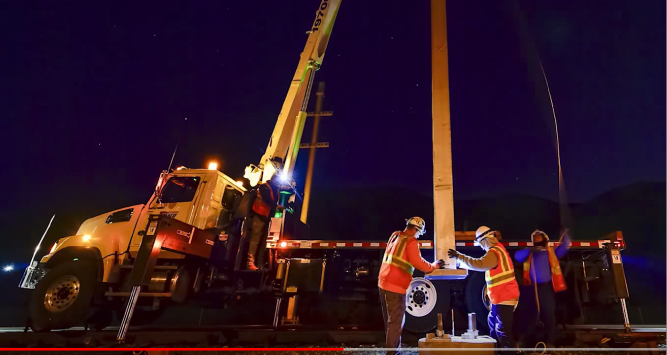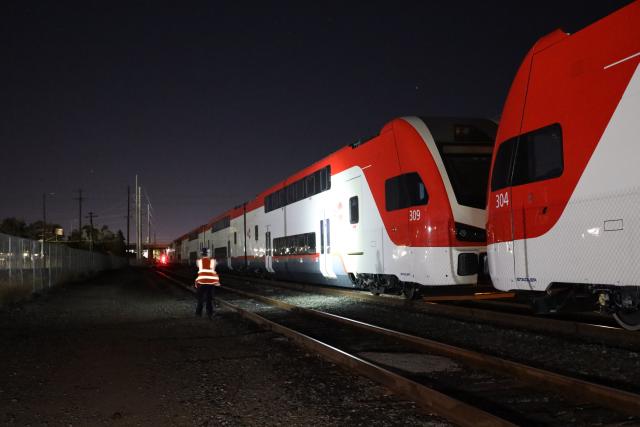System Testing
System testing ensures that all components of Caltrain Electrification – from the wires and power facilities to the high-performance electric trains – function seamlessly together. Learn more about the steps involved to test the different parts of the electrification infrastructure and electric trainsets on the Caltrain corridor below.
INFRASTRUCTURE
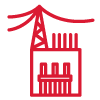 | TRACTION POWER FACILITY TESTING Power is routed to one of ten facilities to test mechanical and electrical components. |
 | ENERGIZED WIRE TESTING To ensure proper voltage, power is routed to overhead wires in sections. |
 | TEST TRAIN TA retired AEM-7 locomotive tests the new electrification infrastructure in segments. |
ELECTRIC TRAINS
 |
STATIC TESTING The new electric train remains stationary as features and functions such as the lights, HVAC, monitors, doors, and more are tested at a Caltrain facility. |
 |
DYNAMIC TESTING The vehicle undergoes short distance, low-speed testing near a Caltrain facility. |
 |
ROUTINE TESTING Acceleration and braking are tested repeatedly to ensure maximum safety and optimal speeds. |
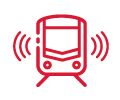 |
QUALIFICATION TESTING This stage tests control and communication protocols such as train radio, rescue operations, and Positive Train Control (PTC). |
 |
BURN-IN AND SIMULATED SERVICE TESTING At this phase you can spot the new, state-of-the-art electric train as it runs up and down the corridor, earning its first 1,000 miles of flawless transit. |
 |
CONDITIONAL ACCEPTANCE After completing all testing requirements, the electric train is ready for passenger service. Caltrain now owns and operates California’s first electrified commuter rail train. |
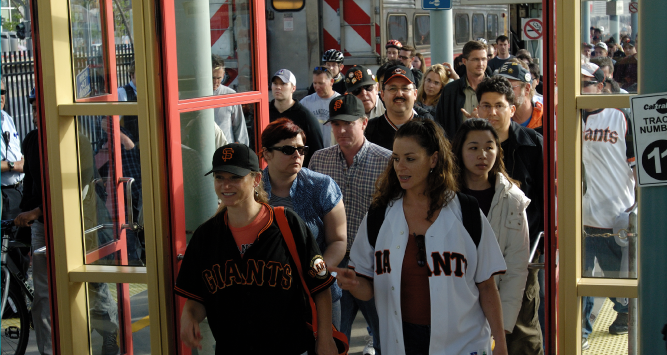
Project Benefits
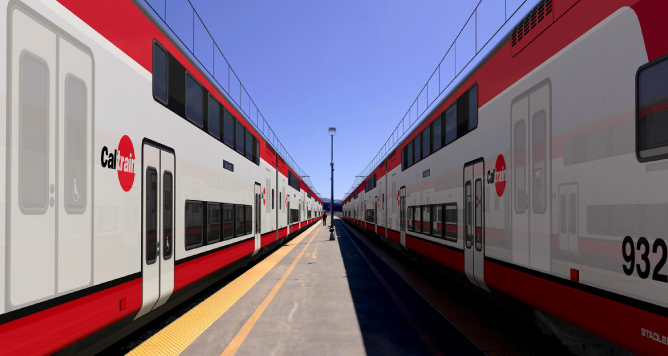
Electric Trains
